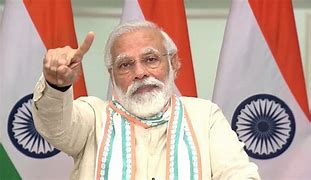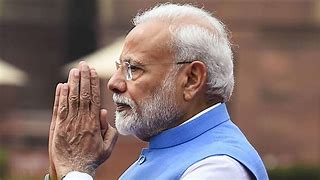World
Innovation, digital economy, clean energy to animate Modi’s US trip

By Arun Kumar
Washington: As Prime Minister Narendra Modi sets out win over America again with an outreach to the Indian-American community, three themes would animate his journey-entrepreneurship and innovation, digital economy and renewable energy.
Landing in New York on Sep 23 evening, Modi will have an interaction with potential investors, a discussion with media and communication majors and a dinner with CEOs of 40-plus companies focusing on infrastructure and manufacturing in aid of his “Make in India” initiative, next day.
Among the leaders of Fortune 500 companies expected at the dinner meeting with Modi at New York’s Waldorf Astoria hotel are Lockheed Martin chairman Marillyn A Hewson, Ford Motor president Mark Fields, IBM CEO Ginni Rometty, PepsiCo CEO Indra Nooyi and Johnson & Johnson chairman Jorge Mesquita.
Modi will then head to the Silicon Saturday after addressing the UN global summit Friday.
The first Indian leader to visit California in more than three decades, Modi is set to have meetings among others with Apple CEO Tim Cook, Facebook founder Mark Zuckerberg and electric carmaker Tesla’s iconic CEO Elon Musk.
Besides a town hall style question-answer session at Facebook’s Menlo Park headquarters, Modi will also be meeting Satya Nadella, Sundar Pichai and Shantanu Narayen, India-born CEOs of Microsoft, Google, and Adobe respectively.
Modi is the first Indian prime minister to visit the Bay Area since Morarji Desai picked up an award at University of California, Berkeley in 1978 and Indira Gandhi visited Los Angeles in 1982.
His first stop in California will be at Tesla’s Fremont plant on Saturday. Here more than the zero emissions cars that it makes, Modi would be interested in its “Powerwall”, a home battery charged by solar panels, for India’s clean energy initiative.
With many an Indian at the forefront of innovation in the Silicon Valley, Modi will be looking at how to maximise opportunities at a digital economy dinner that evening attended by several Indian-American tech leaders as also Cisco Chairman John Chambers, and Qualcomm Chairman Paul Jacobs among others.
Next day after discussing “how communities can work together to address social and economic challenges” at the Facebook townhall, Modi, who has more Facebook fans than any politician except Barack Obama, will head to the Googleplex in Mountain View, Santa Clara.
Besides Pichai, Modi will also be meeting Eric Schmidt, executive chairman of Google’s new holding company Alphabet Inc, there.
At Googleplex, Modi will also witness the start of a 15 hour hackathon or a marathon software coding session with some 150 Indian programmers looking to produce software and applications relevant to India for Modi’s Digital India and Skill India missions.
Hosted by the Indian IT industry trade body, the National Association of Software and Services Companies (NASSCOM), along with a clutch of start-ups in India and the US, the hackathon will have a simultaneous session at Tech Mahindra’s Noida facility.
Later that day he would participate in a roundtable on renewable energy hosted by Precourt Institute for Energy of Stanford University in cooperation with the US Commerce Department.
Modi, who last year got a rockstar like reception when he gave a speech at New York’s Madison Square Garden, would be hoping to recreate that magic at a community reception in San Jose on the evening of September 27.
More than 45,000 people have registered for free passes for the event at the 19,000-seat SAP Centre organised by an Indian American group.
Back in New York on September 28 after his two-day visit to the Silicon Valley, Modi will have his third summit with Obama within a year in the backdrop of the first India-US strategic and commercial dialogue in Washington on September 21 and 22,
World
Lockdowns in China Force Urban Communities to Defy Censorship and Vent Frustration Online

Shanghai’s rich middle class is leading a wave of online dissent over the strict and prolonged lockdowns imposed in various parts of the country. Chinese internet censorship is struggling as patience is wearing thin in many urban centers, coming up with creative forms of online protests.
Social Media Posts Revealing Lockdown Tension in Shanghai
Drawn-out lockdowns are nothing new in China as authorities insist with the nation’s zero-Covid policy since the start of the pandemic. Currently over This time around, however, metropolitan areas like Shanghai are increasingly difficult to keep quiet, given that its more than 25 million residents have seen weeks of total isolation along with food shortages and many other service interruptions.
Dozens of towns and reportedly over 300 million Chinese citizens have been affected by lockdowns of different severity. As expected, urban netizens have been most outspoken over their difficulties by finding creative ways to get around state censorship and bans placed on topics, news comments and spontaneous campaigns.
Shanghai residents have been using mobile proxies and hijacking seemingly unrelated hashtags to talk about healthcare issues, delivery failures and the overall severity of their situation. The “positive energy” that the Chinese government wants to transmit during the recent prolonged series of lockdowns does not come naturally to those counting food supplies and online censors are working hard to filter words, trending topics and undesired social media sharing.
WeChat groups and message threads are under constant monitoring. Posts questioning the zero-Covid approach have been quickly deleted, including by leading Chinese health experts like Dr. Zhong Nanshan. Video footage is soon censored and protests and investigations are quickly made to disappear.
Where this has not worked, officials have exposed banners with warnings and outright threats like “watch your own mouth or face punishment”, while drones have been patrolling the city skies. Yet, if anything, this has led to further tensions and unspoken confrontation with Shanghai’s educated and affluent middle class.
Creative Online Solutions Harnessing Civic Energy
Announcements by Chinese social media that they would be publishing the IP addresses of users who “spread rumors” have not helped either. Tech industry research has shown that much of Asia’s tech-savvy population has a habit of using mobile proxies and other privacy tools, quickly finding workarounds to browse the internet freely and talk to the world about the hottest topics.
The sheer volume of forbidden posts is already a challenge for the very censorship system, experts explain. Unable to track all trending hashtags, state workers overlook topics that speak about the US, Ukraine or other popular news. Linking human rights elsewhere to their situation, Chinese online dissidents establish their informal channels and “hijack” the conversation to share personal or publicly relevant information about the Covid suppression in their town.
Sarcastic and satirical posts still dominate. Others hope to evade the censors by replacing words from famous poems or the national anthem. One thing is certain – social media, when harnessed with the right creativity, has proven its ability to mount pressure on the government in even some of the most strictly controlled tech environments like China.























